Hallstatt: Reflections of an Ancient Salt Kingdom
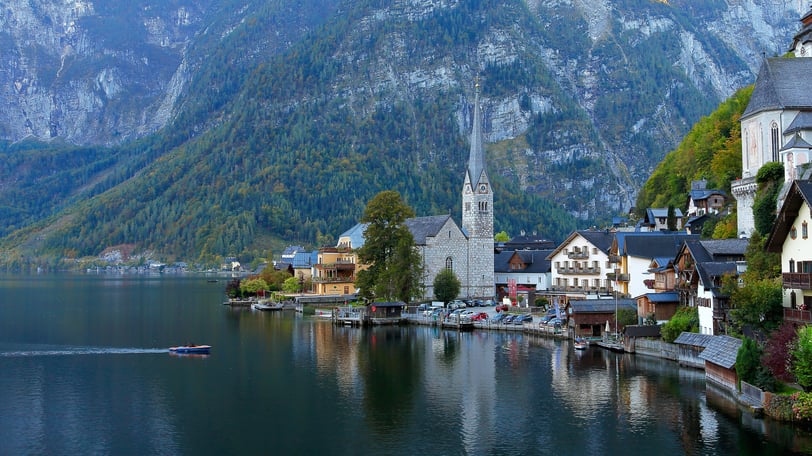

Nestled between towering alpine cliffs and the tranquil waters of Lake Hallstatt, the village of Hallstatt is more than just a picturesque postcard scene. It is a place where history lingers in the air, carried by the whispers of an ancient salt kingdom that once flourished here. The pastel-colored houses clinging to the steep slopes, the church spires piercing the mist, and the wooden boats gliding across the glassy lake—Hallstatt is a dream suspended in time.
A Legacy Carved in Salt
Salt has been the lifeblood of Hallstatt for over 7,000 years, making it one of the oldest continuously inhabited settlements in Europe. The region’s salt mines, among the oldest in the world, once supplied the prized ‘white gold’ that sustained entire civilizations. The ancient Celts, the Romans, and medieval traders all sought Hallstatt’s riches, leaving behind archaeological traces that still surface today.
The Hallstatt Salt Mine, perched high above the village, is a portal into this history. Visitors who venture into the mine descend into a subterranean world where wooden staircases, ancient brine tunnels, and prehistoric tools tell the story of an industry that shaped an empire. A preserved 3,000-year-old miner, discovered deep in the salt tunnels, serves as a haunting testament to the enduring power of this mineral.
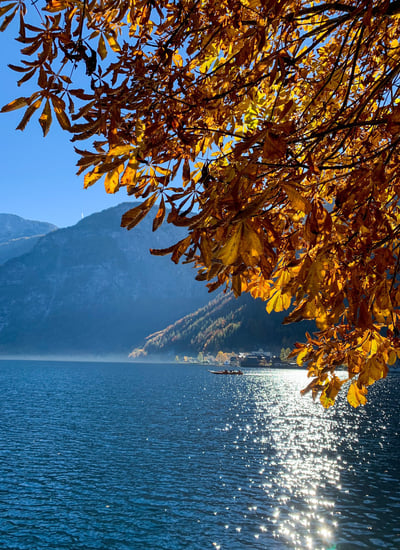

Reflections on the Lake
Echoes of a Forgotten World
Beyond its visual splendor, Hallstatt holds an ethereal charm—a quiet reverence for the past. The Beinhaus, or Bone House, is one of its most haunting yet fascinating sites. Inside this small chapel, over 1,200 skulls are stacked neatly, many painted with delicate floral motifs. It is an old tradition, born from limited burial space, where the dead are honored by becoming part of the living memory.
Wandering through Hallstatt’s narrow streets, one might feel as if they have stepped into a world that exists outside of time. The scent of firewood lingers in the air, blending with the crisp mountain breeze. Small cafés offer warm pastries and strong coffee, their terraces inviting guests to watch the world drift by at an unhurried pace. In the evening, as the lanterns flicker along the lakeside promenade, Hallstatt becomes a scene from an old folktale—one where echoes of the past still whisper to those who listen.
Hallstatt’s beauty is inseparable from its lake—Hallstätter See, a vast mirror of alpine serenity stretching across 8.55 square kilometers. In the early mornings, mist drapes over the water like a spectral veil, blurring the boundaries between sky and earth. The reflections of the village, mirrored in the lake’s still surface, seem almost too perfect—an illusion of symmetry that has captivated travelers, painters, and poets for centuries.
It is here that time slows. Spanning nearly six kilometers in length, Hallstätter See is more than just a scenic backdrop; it is a lifeline that has shaped the region’s history for centuries, from ancient salt trade routes to quiet fishing traditions. Wooden boathouses line the shore, their doors creaking open to let fishermen glide into the morning fog. Swans move like specters across the water, their white feathers barely disturbing the silence. For those who seek solitude, renting a traditional wooden boat and drifting into the lake’s embrace is the closest one can get to a conversation with eternity.
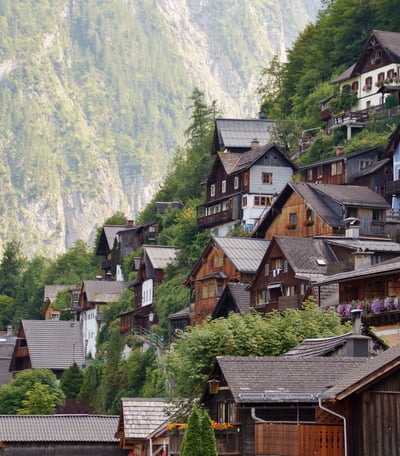

A Place That Inspired Artists
Getting to Hallstatt
Reaching Hallstatt is an adventure in itself, a journey that feels like stepping into a storybook. The most scenic route is by train from Salzburg or Vienna, where passengers are treated to sweeping views of emerald-green lakes and dramatic mountain peaks. The train stops at Hallstatt Station, located across the lake, requiring a short ferry ride to the village—a breathtaking approach that reveals Hallstatt’s beauty in slow, mesmerizing detail.
For those traveling by car, winding alpine roads lead to the village, but parking is limited, encouraging visitors to explore on foot. Buses also connect Hallstatt to Salzburg and other nearby towns, making it accessible even for those without a vehicle.
Hallstatt’s beauty has not gone unnoticed by artists and thinkers throughout history. Austrian writer Adalbert Stifter was deeply inspired by the landscapes of Salzkammergut, including Hallstatt, capturing its tranquility in his prose. Similarly, Gustav Mahler, one of Austria’s greatest composers, found solace in the stillness of alpine lakes, reflecting their serenity in his sweeping symphonies. Even the bold and colorful visions of artist Friedensreich Hundertwasser were shaped by the organic beauty of Austria’s villages, including those nestled in these mountains.
Hallstatt has also been a muse for Romantic painters who sought to capture its dreamlike reflections and mist-covered rooftops. This is a place where the past does not simply linger—it becomes part of the present, woven into the fabric of art and music.
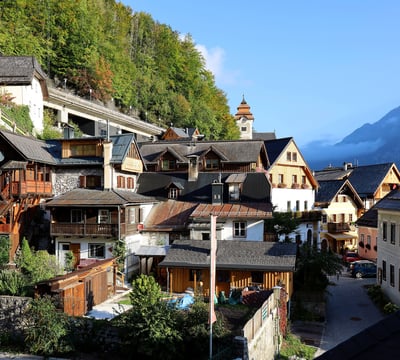

Where to Stay: Sleeping in a Fairytale
Best Time to Visit: Seasons of Enchantment
Hallstatt is a year-round destination, each season casting a different spell on the village. Spring and summer bring lush greenery, blooming wildflowers, and perfect weather for boat rides. Autumn transforms Hallstatt into a golden dreamscape, with misty mornings and fiery foliage reflecting in the lake. Winter covers the town in a blanket of snow, turning it into a Christmas postcard, complete with twinkling lights and frozen waters.
While summer is the busiest season, those who prefer solitude may find late autumn or early spring ideal, when the crowds thin and the village’s quiet magic becomes even more profound.
Hallstatt offers a range of accommodations, from charming lakeside guesthouses to cozy alpine lodges. Staying overnight is highly recommended, as the village takes on an entirely different character once the day-trippers leave, revealing a quiet, almost mystical atmosphere.
Many visitors opt for family-run inns that offer rooms with balconies overlooking the lake, providing the perfect setting for a tranquil morning coffee. For a more immersive experience, some historic homes have been converted into boutique hotels, where wooden beams and antique furnishings add to the charm of the stay.
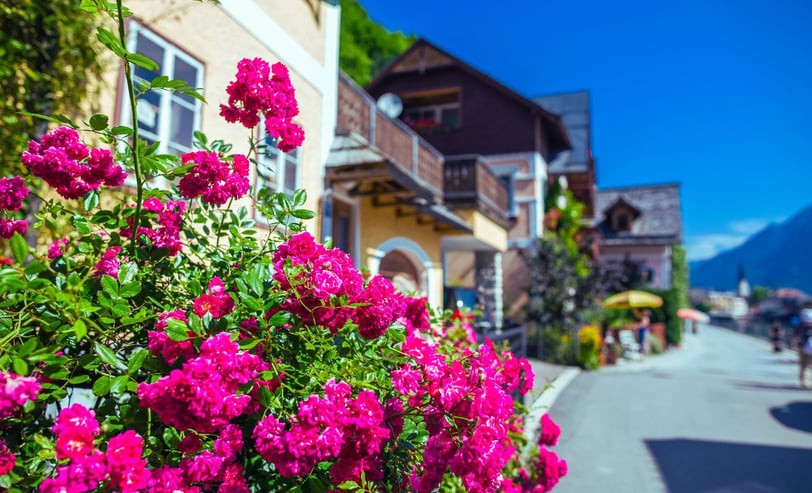

Who Should Visit?
A Place Between Worlds
Hallstatt is a bridge between the ancient and the present, between the material and the mystical. It is a place where nature and history intertwine so seamlessly that it feels almost unreal. Whether one comes seeking its history, its beauty, or simply the serenity of its reflections, Hallstatt leaves an imprint on the soul—a reminder that some places are not merely visited; they are experienced, remembered, and longed for.
Hallstatt caters to many kinds of travelers. Couples will find it irresistibly romantic, whether wandering hand-in-hand along the lake or sharing a quiet dinner in a candlelit tavern. Solo travelers seeking introspection will appreciate its stillness, while families can enjoy scenic boat rides, gentle hikes, and the fascinating salt mine tours that captivate both children and adults alike.
Adventure seekers can hike the Echern Valley Glacier Garden, where waterfalls and ancient rock formations tell stories of a prehistoric world. Meanwhile, those in search of a peaceful retreat will find solace simply sitting by the lake, watching the reflections shift with the passing clouds.
Beyond salt and stone, Hallstatt holds a quieter truth—one found in its silences, in what lingers between bells. Follow it in Travelers’ Tales — “The Silence Between Bells: A Hallstatt Reverie.”
For a deeper dive into Hallstatt’s timeless beauty, rich heritage, and the latest travel updates, explore the comprehensive guide in Travel Insights — "Hallstatt 2025: Timeless Beauty, Ancient Salt Mines, and Cultural Highlights."
✉️ Contact:
Curated by TrueTrip Hub |
© 2025 Invisible Atlas — All rights reserved.
Invisible Atlas
Journey Beyond the Visible
invisible.atlas@truetriphub.com
